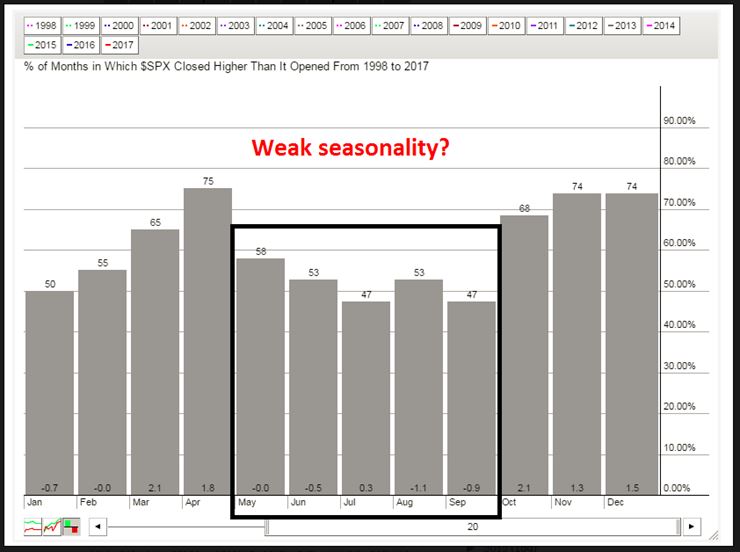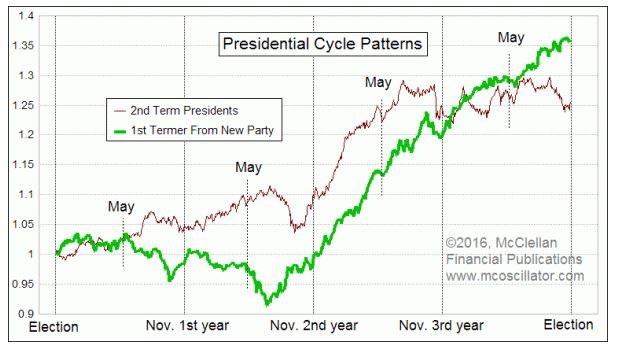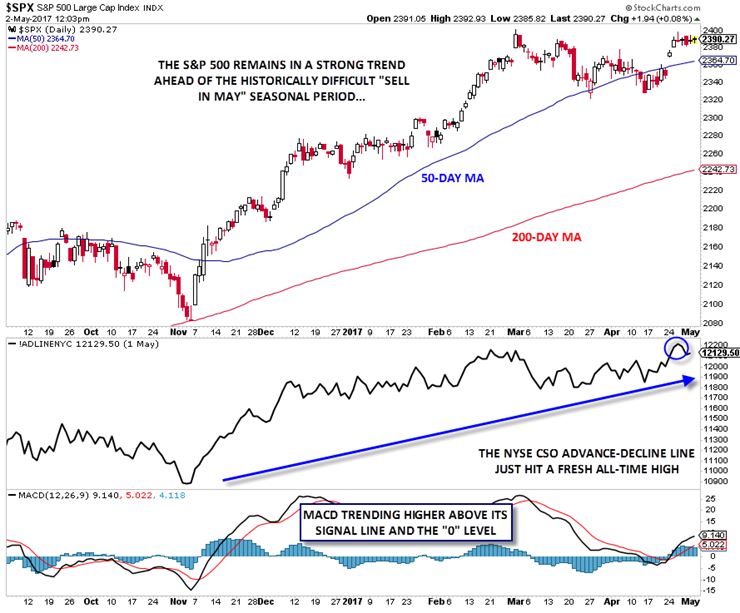"When beggars and shoeshine boys, barbers and beauticians can tell you how to get rich, it is time to remind yourself that there is no more dangerous illusion than the belief that one can get something for nothing." - Bernard Baruch
"Sell in May and Go Away" - Wall Street Adage
While I've never once gotten my shoes shined, I do have my own version of the proverbial shoeshine boy who signals the top: my father-in-law.
He regularly provides a perfect contrary indicator: when he see it's time to buy something (like US stocks in 2008 or the US dollar at the start of this year), it's inevitably time to sell and vice-versa. So you can bet when he started asking me about selling in May this weekend, my contrarian radar perked up.
The historic case for a seasonal headwind for US stocks over the summer months is well-established. According to the Stock Trader's Almanac, the Dow Jones Industrial Average has generated an average annual return of only 0.3 percent during the six-month stretch from May through October since 1950. In contrast, the Dow has averaged a solid 7.5 percent gain from the months of November through April.
As the chart below shows, the stocks have historically struggled in the May-September period, with the S&P 500 rising only roughly half of those months over the last two decades, compared to closer to 65% of the time for the other seven months:

Source: Humble Student of the Markets
Like all seasonal patterns, the "Sell in May" heuristic doesn't work all time, but the historical data shows a relatively strong tendency for stocks to struggle over the next 5-6 months. Indeed, This phenomenon is so well known that there's actually a "Sell in May" ETF!*
From our perspective, the most interesting aspect of this phenomenon is the interaction between the annual "Sell in May" cycle and the well-documented 4-year Presidential Cycle. Recent research suggests that almost the entire underperformance of the May-October period since 1927 took place in the 3rd year of the Presidential cycle! In other years, the summer performance generally matched the other 6 months of the year.
So that means there's nothing to worry about, right?
Not necessarily.
When split up by first term presidents from a new party (small sample size alert!), the first year of the presidential cycle has actually led to a fairly dramatic underperformance in the broad stock market, as the chart below shows:

Source: McClellan Financial Publications
So what's an investor to do? Like most well-known market truisms, successful investing strategies are not as straightforward as pithy sayings.
In our view, the best "strategy" is to focus on the market's actual price action and internals; any signs of a reversal lower will show up in the price action before anywhere else. So how's the market look now?
With the S&P 500 trading above both the (rising) 50- and 200-day moving averages, the NYSE "Common Stock Only" Advance-Decline line hitting a new high, and the MACD trending higher above both the "0" level and its signal line, the path of least resistance remains to the topside for US stocks in our view:

Source: Stockcharts.com
...and it certainly doesn't hurt that the bullish view is also a contrarian trade to my father-in-law's concerns about the market's seasonality!
Obviously, if the evidence changes, we'll change our view, but for now, we see no reason to doubt the established bullish trend in stocks.
*It's worth noting that the ETF, which is based on the work of research of CFRA CIO Sam Stovall, actually just rotates into different sectors through the summer months, rather than sell stocks completely.
